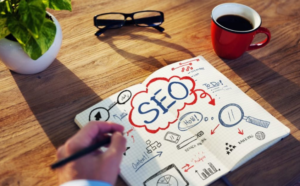Reach your audience in the B2B market with Google Ads
6 min read
LinkedIn is by no means the only advertising channel that can help your B2B company reach potential leads and, in turn, customers. Google Ads advertising is an effective way for your B2B company to gain new audiences and reach businesses and decision-makers already interested in your products or services.
In the B2B market, buying processes can be very long. With Google Ads, you can effectively market your business at different stages of the buying journey. Through keyword advertising, you can reach an audience with an existing intention to search for your products or services, from the information gathering stage to the decision making stage. Display and discovery advertising allows you to reach a variety of audiences, either predefined or customised by Google. In the B2B market, this is particularly important for remarketing audiences who are already familiar with your company.
However, using Google Ads for B2B advertising requires careful planning, management and optimisation to ensure that the campaign delivers the desired results.
The potential of Google Ads in B2B marketing
In the B2B market, companies sell their products or services to other companies, while in the B2C market, companies sell directly to end users, i.e. consumers. In this case, B2B marketing is also different from the usual marketing to consumers. The essential differences between the two in terms of marketing are:
The length of the buying process, which generally involves several people or even teams in B2B companies.
Customer relationships and contracts are longer and require more care than with direct consumers.
Pricing of products and services and negotiation of contracts is more complex and flexible than in the B2C market.

Multiple possibilities for advertising targeting
Google Ads allows for highly targeted advertising, enabling your B2B business to reach the audience you want. For example, you can target ads based on geography, user interests, demographics, device type or search history. For example, targeting could be; “25-54 year olds interested in business services in the metropolitan area, including computer users and excluding mobile users.”
In search advertising, targeting is presumably done with different keywords that are desired to be used in the ad. These keywords can be used to market your company’s products or services at different stages of the purchase path. In the B2B market, localisation is often essential for businesses. Google Ads allows not only geographic targeting but also the use of keywords related to a municipality or city, such as “machining helsinki” in the example.
Cost-effectiveness
Compared to traditional advertising methods such as print or TV ads, Google Ads can be a very cost-effective solution for your B2B business. The ability to set a daily budget and only pay when someone clicks on an ad will help your business ensure you get the most out of the money spent on advertising.
Even if your business market has high click-through rates, for example €5, and a conversion rate to leads of 1%, you will pay €500 for quality leads. If your business is trading 20% of leads, you would have spent €2500 on acquiring a customer, which would hypothetically bring in tens or even hundreds of thousands of dollars in revenue.
Brand awareness
Even if your B2B company is using advertising to drive direct sales, Google Ads advertising also helps to build brand awareness. Google is the world’s most popular search engine, so Google Ads has huge potential to reach new customers.
Search advertising helps you stay top of mind with Google search users related to your business, and Display and Discovery ads also visually put your brand in front of either a larger or highly targeted audience.
Flexible advertising to suit your needs
Google Ads offers a lot of flexibility for your B2B business. You can create ads in a variety of formats, including text, image and video, to suit your marketing strategy.
You can also adapt your ads in real time to reflect business changes, such as new products or services. Unlike many other marketing strategies, Google Ads can deliver results for your business quickly. Setting up and launching your campaign settings is extremely agile, especially for a professional, and ads can start appearing within the same day at best.
Measurement and analysis
Google Ads provides detailed tools for monitoring and analysing the performance of your advertising campaigns. This allows your business to optimise ads in real time, using data to analyse which messages and visuals work best for which target groups or buyer personas, for example.
The data can also be used for more concrete business development. Keyword data or visitor behaviour data can also be used to develop new products or services and optimise pricing strategies.
For example, a search for a single product might result in a material/feature + product that leads to your company’s website, even if that particular material/feature is not exactly available on your company’s website. In this case, it is worth considering whether it would be a good idea to add the material/feature for that search to your own range.
Measure
Google Ads provides your business with detailed metrics and analytics to help you measure the success of your campaign. This includes data on clicks, impressions, click-through rates, trend changes and more.
For example, you can measure which landing page is the most effective in generating a final bid. The data can be used to improve and optimise existing and future campaigns for better results.
Reach
The first step in the MRACE® model is Reach, which involves getting the message about your products or services across to potential customers. As an advertiser, you can use Google Ads with a number of different targeting variations.
But targeting alone is not enough – to reach potential customers effectively, your company needs to create an engaging advertising message that resonates with the right target audience. This is where website content writing is an essential value-added activity. By creating high-quality website content that speaks to the needs and pain points of your target audience, you can create a more cohesive and effective marketing strategy that integrates with your Google Ads campaign.
Act
The Act phase involves encouraging potential customers to take an action, such as taking an action on a website. This could be, for example, advertising product samples or other downloadable materials. Once users have clicked on an advertisement and landed on the website, the content and user experience of the website will ultimately determine whether they take the desired action.
By creating quality website content that is optimised for the user experience and the most important action, such as a purchase or contact request, you will improve the effectiveness of your website. This drives results in the right direction and maximises the return on investment in Google Ads advertising.
Convert
The main purpose of the conversion phase is to convert potential site visitors into either leads or direct customers. With Google Ads, this stage can be promoted by targeting advertising to distinct groups of users who are still engaged in the buying process, such as those who have previously visited your website or interacted with your business in some other way.
But converting potential customers requires more than just effective targeting – it also requires a strong value proposition, persuasive messaging, and a user-friendly website experience that makes it easy for users to move through the buying process and make a final decision.
One of the most powerful tools in the Convert phase of Google Ads is remarketing through Display and Discovery advertising. These can be used to visually highlight your company’s brand to visitors to your website or to show visitors to specific product pages other products related to those products.





